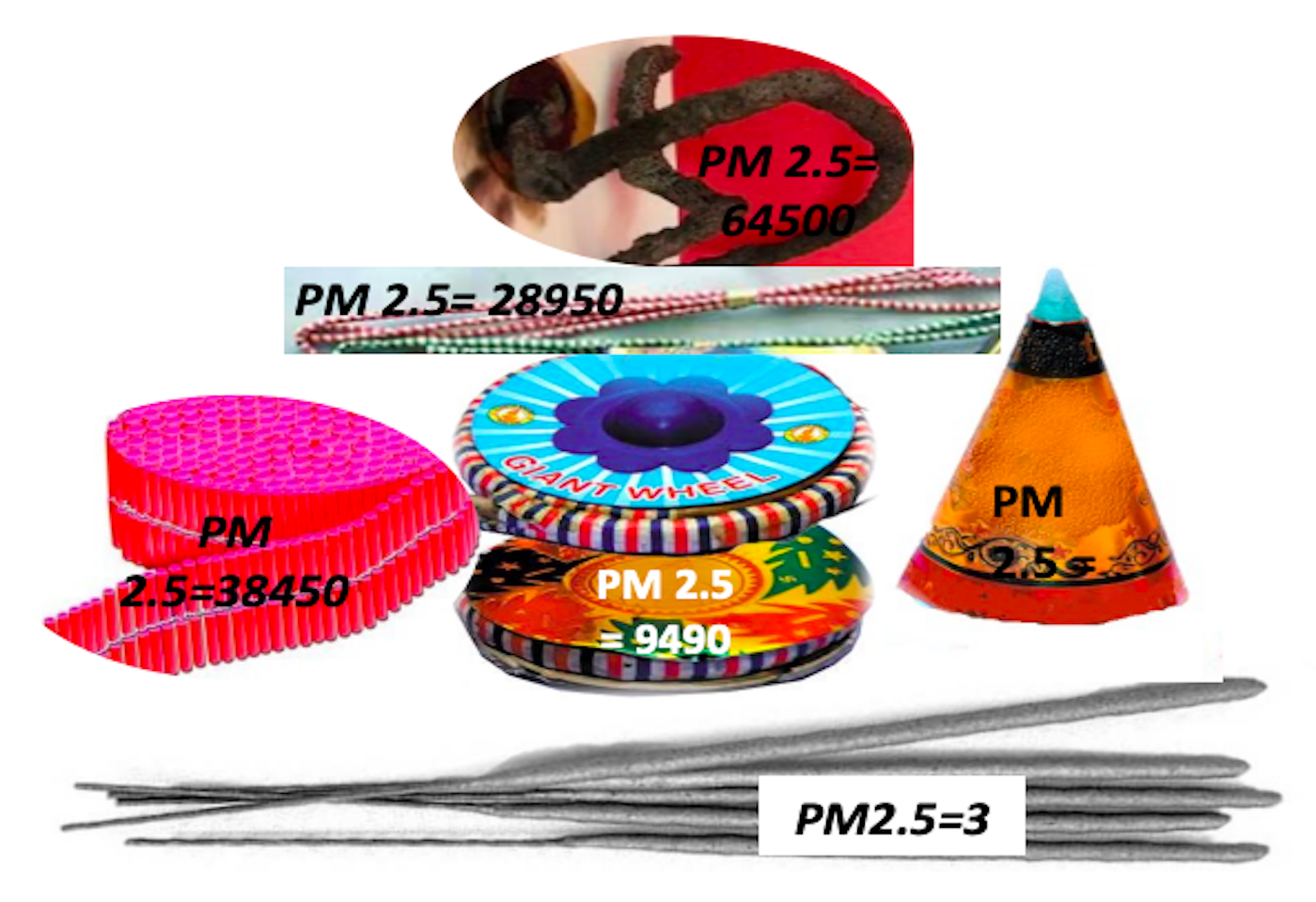India
healthysoch
New Delhi, October 28, 2024:
Diwali is the festival of lights, prosperity and happiness and all of us long to celebrate it in all its fervor. New clothes, cleaned and painted homes and festive foods all add to the euphoria. Firecrackers have been increasingly used as another mode of celebrating Diwali, New Year, and other occasions. However, unlike other celebratory means, firecrackers produce loud noise and emit poisonous gases, heavy metals and dust particles which are detrimental to human health. We don’t think about the harmful effects of firecrackers, as the fancy colourful packings almost never display anything regarding content and harmful effects(Unlike Cigarettes).
A firecracker needs fuel to burn, which is usually charcoal. Then there are chemicals (oxidising and reducing agents) that make the mixture more explosive. Colouring agents (usually heavy metals) are used to produce various attractive colours. Then there are some chemicals (regulators) to control the speed of burning of the cracker. To add to harmful effects, there are binding materials, like paper and glue, to keep the firecracker wrapped and packed into a single unit.
Adverse Health Effects:
Acute respiratory effects from these ambient pollutants include increased breathing difficulty, precipitation of acute asthma or Bronchitis, reduced lung functions, increased emergency room visits, hospital admissions and excess daily deaths. Long term effects range from chronic lung disease, lung fibrosis to lung cancer.
Content of Firecrackers and their Adverse Health Effects (Modified from Central Pollution Control Board data)
What Does Fire Crackers contain
• Charcol, potassium nitrate, sulphur
• Chemicals (Oxidizing and reducing agents): Nitrates, Chlorates or perchlorates, Sulphur
• Heavy metals (for attractive colours):Aluminium, Strontium, Barium, Copper)
• Chemicals (Regulators to control speed of burning)
• Binding material (paper, Glue) Ash, carbon monoxide, volatile organic compounds, polycyclic aromatic hydrocarbons
Extent of Air pollution due to Fire Crackers:
Very high levels of toxic particles are produced with firecrackers. As studies at Reseach foundation Pune. A single snake tablet produces nearly 64500 µg/m3 of PM 2.5 within 3 minutes; a Garland (Ladi of 1000) produces 38450 µg/m3 PM2.5 in 6 minutes; a pulpul produces 28950 µg/m3 in 3 minutes, sparklers (fuljhadi) 10390 µg/m3 in 2 minutes, Ground spinner (chakri) 9490 µg/m3 in 5 min, flower pot (Anar) 4860 µg/m3 in 3 min.
We get exposed to these high levels of PM 2.5 within minutes leading to immediate and long term effects as firecrackers weakens our immunity and causes much more inflammation as compared to same amount produced from automobile and other sources. A firecracker produces more than 40 to 400 times the amount of harmful gases as compared to a cigarette
Therefore, it is imperative that we modify our behaviour of burning firecrackers for the benefit of ourselves, our environment and Mother Earth, and let knowledge and h ope win over ignorance and despair this Diwali
Is air pollution due to fire cracker is similar to ambient air pollution that we have:
 We often think that other activities also cause air pollution, and tend to overlook the bad effects of firecrackers. But, it has been scientifically proven that same amount of particulate matter produced by Fire crackers is much more harmful than usual air pollution.burning (Godri et al, 2010).
We often think that other activities also cause air pollution, and tend to overlook the bad effects of firecrackers. But, it has been scientifically proven that same amount of particulate matter produced by Fire crackers is much more harmful than usual air pollution.burning (Godri et al, 2010).
We also feel that the firecrackers are legitimately manufactured, and so they must be safe. However, as you can understand from the table, substances used to manufacture firecrackers contain lots of heavy metals and produce many cancer producing gases and compounds.
Petroleum and Explosives Safety Organisation has released guidelines for sulphur, nitrates and aluminium content in firecrackers. The highest allowed content is 20% for sulphur, 57% for nitrates and 24% for aluminium. Lithium, mercury, arsenic, lead and antimony containing crackers have been banned by Supreme Court of India. Potassium chlorate based crackers have been entirely banned in India. There is no regulation yet on aluminium, barium, strontium and copper.
But we seldom get any cracker packages mentioning their contents, that they do not contain any banned heavy metals. A firecracker produces more than 40 to 400 times the amount of harmful gases as compared to a cigarette and yet comes without any statuary warning of adverse health effects, and without any limitation on age of the potential buyer. It’s the young children who get most effected, and parents or elders who are supervising them during cracker burning.
Deposition of pollutants in our body depends upon particle size. Particles smaller than 2.5 µm in diameter enter our lungs via our breath and particles smaller than that travel to all parts of the body through circulation. They cause inflammation and predispose to diseases of virtually all organ systems (especially heart and Brain). Gases like sulphur oxides, carbon monoxide and suspended particulate matter are detrimental to health.
Severity of Air Pollution in India:
Type of Fire cracker and levels of PM 2.5 within 1-6 feet distance


Diwali is a festival signifying victory of light over darkness, of knowledge over ignorance and hope over despair. Indian civilisation has its roots in co-existence of man with environment, and prayers are offered to Mother Earth during Diwali pooja.
Author: G C Khilnani, Chairman, PSRI Institute of Pulmonary, Critical care and Sleep Med Member: WHO Technical Advisory group on Global Air Pollution and Health
healthysoch







